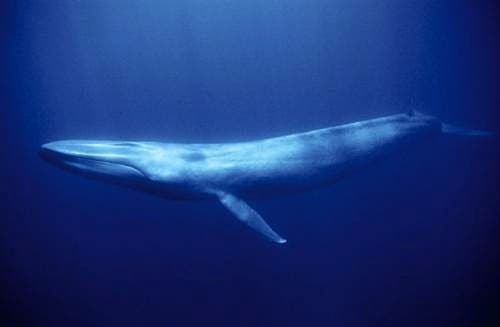Animals living in the ocean today are 150 times larger than their Cambrian counterparts from 540 million years ago, according to a new study which seems to suggest evolution favors an overall growth in size. Why bigger is better is not well understood at this time.
Bigger is better?

The XIXth century paleontologist Drinker Cope – one of the most productive fossil hunters in history, naming more than 1,200 vertebrate species and publishing more than 1,400 papers – posited a famous theory that suggested there’s a tendency of animal and plant lineages to get bigger over time. This idea came to be known as “Cope’s rule”. Initially, it was widely accepted but since the 1970s it came under criticism for lack of consistent evidence. For instance, evolutionary biologist Stephen Jay Gould later described the rule as a “psychological artifact.” More recent studies, however, have suggested that the rule has validity.
Dr Noel Heim, from Stanford University in California, wanted to test Cope’s rule, and his ambitions were high. No less than 17,000 groups, or genera, of marine fossils were analyzed or almost two-thirds of all animals that ever lived. Of course, he couldn’t have done it alone. He enlisted the help of colleagues, students and even high school kids. Together, they painstakingly went through the records. High school children, for instance, used calipers to measure size features of animals from the photographs and detailed illustrations of fossils in the 50-volume Treatise on Invertebrate Paleontology – a sort of paleontology bible which lists every invertebrate animal genus with a fossil record known to science. Make no mistake, this was a mammoth collaborative effort.
“There has been this open question of whether animals get bigger, over time — but there’s been a lack of data,” said Heim, a postdoctoral researcher in paleontologist Payne’s lab at Stanford’s School of Earth, Energy and Environmental Systems.
These measurements revealed that throughout the geological timeline, starting from the Cambrian until present day, marine animals who grew larger in size were favored. For instance, the mighty blue whale is more than 100,000 times the size of the largest animal the Cambrian could offer, a puny crustacean with a clam-like, hinged shell. But that’s not to say all animals want to grow large – simply put evolution fosters expansion as long as there are enough resources about. There will always be enough room for small animals and the trend is far from being linear. Take dinosaurs for instance – the biggest terrestrial beings ever to walk the face of Earth. These didn’t go completely extinct, in the flick of a moment but evolved into much smaller beings. Yes, birds! At the same time, their place was taken by mammals which grew ever bigger.
So, why aren’t we actually talking about how evolution is fostering an expansion in species diversity, instead of size? Because both things are at play. The branches of the family tree that were populated by larger animals divided many more times, until larger animal species were much more numerous than tiny ones. Remember, large doesn’t have to be a whale or mammoth. The scientists’ work is relative to Cambrian animals, which lived some 540 million years ago.
To findings published in Science distance the idea that Cope’s rule describes a linear pattern. Instead, marine life grew in size by leaps, not gradually. The first jump took place between the Cambrian and Permian periods, when plants, amphibians and reptiles first emerged. During the Mesozoic, 250 to 65 million years ago the trend stopped, only to jump again in the late Cenozoic. As any keen observe might notice, these jumps seem to be linked with mass extinctions. “There could be changes in the types of ecology — before and after extinctions — that change trajectory,” Heim seems to agree.
But why would animals want to grow larger? It’s not very clear, but there are some advantages to being bigger, at least for sea dwellers: you can move over larger distances, you can eat bigger prey or hide in sediments. Most certainly, however, there’s a limit to how much you can grow. First of all, you need more food. If there isn’t enough food to support your size, you wont evolve to be larger. In fact, that’s why ice age animals shrank. Also, bodily resources aren’t distributed proportionally to growth rate. Weight per weight or volume per volume, a giant herbivore needs much bigger lungs and much bigger muscles to survive than a smaller creature. The stress thus grows disproportionately to the increase in size, until the advantages of being bigger are outweighed.


